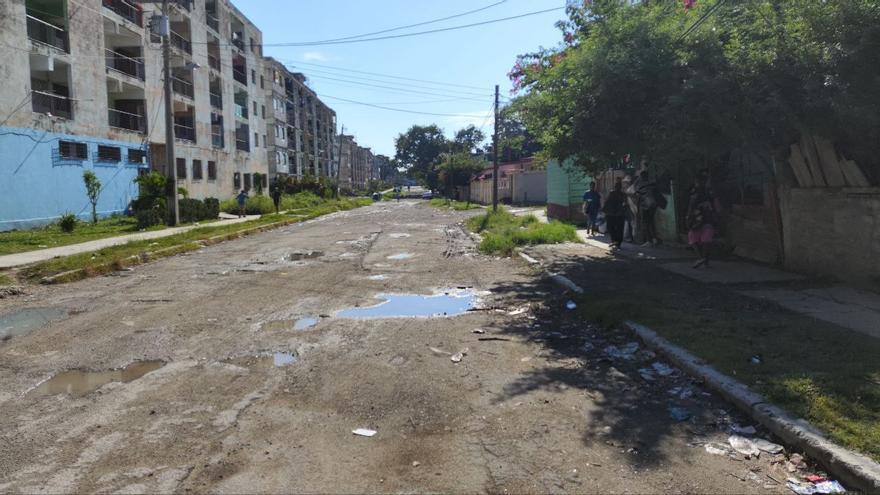
14ymedio, Natalia López Moya, Havana, 20 September 2023 — Electrical storm this Tuesday night in Havana only aggravated what is already “a normal state of things” in the Barrio Obrero of San Miguel del Padrón, in Havana. The potholes in the streets filled with water, mud reached the deteriorated sidewalks and garbage that had not been collected for weeks floated and was scattered throughout the area. Winds cut off the electrical service, which only returned this Wednesday at mid-morning.
Located in the Rocafort Popular Council, the Barrio Obrero is experiencing the worst moment that its residents remember. “This has been abandoned”, says Ramiro, who lives in one of the three-story buildings that were built on the site in the 1980s. At that time, the neighborhood was projected as part of “Havana of the Future”, with modern and affordable apartments for workers of the several nearby industries. But many of those factories no longer exist and the infrastructure around the buildings has remained in the engineers’ plans.
Around the buildings, neighbors have expanded their houses’ space, and improvised structures and parking areas made of tin with lightweight covers also abound everywhere. The initial workers who received those apartments are today the grandparents of young people who have no opportunity to rent or buy their own roof, except by emigrating.
“You walk and walk and there is nowhere to buy anything”, complained a young woman who came to the place to look at a house for sale, one of the many offered on classified sites “with everything inside”
“You walk and walk and there is nowhere to buy anything,” complained a young woman who came to the place to look at a house for sale, one of the many that are being offered through classified sites “with everything inside.” The houses, small but comfortable, sell for $5,000, with furniture and appliances included, a clear symptom of the desperation of owners to auction off the property as soon as possible, probably to leave the country.
The potential buyer, however, came back to her senses “as soon as she saw the panorama of this working-class Neighborhood,” she lamented. A good part of the trees that provided shade for walkers have been cut down or have fallen during a hurricane. At night “you can’t even see your hands,” Ramiro warns, and “to buy food you have to leave here because what is available is little and expensive,” he adds.
“Boys meet in La Herradura park because there is nothing else to do on weekends,” a mother of two teenagers tells 14ymedio. “Not even taxi drivers want to drive here after a certain hour, because they say it’s a dangerous area,” explains the woman. Not much remains of that Barrio Obrero neighborhood with smiling and hardworking proletarians, in the style of images of socialist realism. Now it is a place which the majority of its residents want to leave, as soon as possible, towards another Havana municipality, or to the other side of the Straits of Florida.
Translated by Norma Whiting
____________
COLLABORATE WITH OUR WORK: The 14ymedio team is committed to practicing serious journalism that reflects Cuba’s reality in all its depth. Thank you for joining us on this long journey. We invite you to continue supporting us by becoming a member of 14ymedio now. Together we can continue transforming journalism in Cuba.
